Si vous débutez en patinage, le type de patins que vous choisissez peut faire une grande différence. Voici la réponse courte : les patins artistiques sont généralement meilleurs pour les débutants. Leurs lames plus longues et plus plates offrent plus de stabilité, facilitant l'équilibre et la glisse. Cependant, si vous souhaitez jouer au hockey ou préférez un style plus rapide et dynamique, les patins de hockey valent peut-être l'effort supplémentaire d'apprentissage.
Points clés :
- Patins artistiques : Excellents pour la stabilité, l'équilibre et le patinage de loisir. Idéal pour les enfants et les adultes prudents.
- Patins de hockey : Conçus pour la vitesse, les virages serrés et l'agilité. Mieux adaptés à ceux qui ont des objectifs sportifs ou des aspirations au hockey.
- Courbe d'apprentissage : Les patins artistiques sont plus faciles à prendre en main, tandis que les patins de hockey demandent plus de pratique mais peuvent vous faire progresser plus vite.
Vos objectifs et votre confort sont ce qui compte le plus. Si vous n'êtes pas sûr, essayez de louer les deux types pour voir ce qui vous convient. Décomposons cela plus en détail.
Patins de hockey vs patins artistiques - Ce que vous DEVEZ savoir !
Design de la lame et stabilité
Le design de votre lame de patin joue un grand rôle dans la sensation de stabilité sur la glace. Connaître les différences clés entre les lames de patins artistiques et de hockey peut vous aider à choisir la bonne paire, surtout si vous débutez.
Lames de patins artistiques : la stabilité avant tout
Les lames de patins artistiques sont plus longues et plus plates, offrant plus de contact avec la glace. Ce design les rend excellentes pour la stabilité, surtout à basse vitesse. Les patins artistiques comme les patins de hockey incluent un rocker - une légère courbure de la lame - pour faciliter les virages en douceur.
Une chose à noter à propos des patins artistiques est le crochet à l'avant. Ce bord dentelé à l'avant de la lame est indispensable pour les figures avancées comme les sauts et les pirouettes, mais il peut aussi vous faire trébucher si vous n'êtes pas prudent.
Lames de patins de hockey : vitesse et agilité
Les lames de patins de hockey, en revanche, sont plus courtes et plus courbées. Elles n'ont pas de crochet à l'avant, ce qui les rend meilleures pour les virages rapides et les accélérations rapides. Cependant, ce design sacrifie un peu d'équilibre initial, ce qui peut les rendre plus difficiles à maîtriser pour les débutants.
Quelle lame est la meilleure pour les débutants ?
Si vous débutez en patinage, les lames de patins artistiques sont souvent le meilleur choix. Leur forme plus longue et plus plate offre plus de stabilité, bien qu'il faille faire attention à ce crochet à l'avant. Les lames de patins de hockey, bien qu'excellentes pour des mouvements rapides et dynamiques, demandent un peu plus de maîtrise dès le départ. Votre choix dépend vraiment de ce que vous voulez accomplir sur la glace et de la rapidité avec laquelle vous souhaitez y parvenir.
Ensuite, nous allons explorer comment la conception des bottes et le confort influencent votre expérience de patinage. Restez à l'écoute !
Conception des bottes et confort
Quand vous débutez sur la glace, la façon dont vos patins vous vont peut faire toute la différence. Un bon ajustement ne vous aide pas seulement à mieux patiner - il vous protège aussi des blessures. Que vous penchiez pour les patins artistiques ou les patins de hockey, le bon ajustement est votre priorité numéro un.
Bottes de patins artistiques
Les bottes de patins artistiques visent à créer une sensation ajustée et de soutien. Bien que chaque marque ait ses propres caractéristiques, l'essentiel pour les débutants est de trouver une botte qui serre bien le talon, la voûte plantaire et la plante du pied, tout en laissant assez d'espace pour les orteils. Cet ajustement serré empêche vos pieds de glisser, réduit l'inconfort et vous aide à rester stable pendant la pratique.
Bottes de patins de hockey
Les bottes de patins de hockey sont conçues pour équilibrer performance et protection. Leur construction se concentre sur les mouvements rapides et la protection de vos pieds contre les impacts. Même si elles ont un aspect et une sensation différents des patins artistiques, l'ajustement est tout aussi crucial. Une botte de hockey bien ajustée vous offrira la stabilité nécessaire pour maîtriser les bases, tout en fournissant la protection requise pour des mouvements de patinage plus intenses.
Facteurs de confort pour les nouveaux patineurs
L'ajustement n'est pas la seule chose à considérer - le confort compte aussi. Faites attention à des détails comme le temps nécessaire pour assouplir les bottes et la qualité du rembourrage. Certains patins peuvent sembler rigides au début mais s'adaptent progressivement à vos pieds, tandis que d'autres sont confortables dès la sortie de la boîte mais manquent de soutien à long terme. Ces facteurs de confort peuvent grandement influencer le plaisir et la sécurité de vos premières sessions de patinage.
Ensuite, nous allons explorer comment ces éléments de conception influencent votre contrôle et votre courbe d'apprentissage sur la glace.
Contrôle et difficulté d'apprentissage
La facilité ou la difficulté de votre parcours de patinage dépend souvent de la manière dont vous maîtrisez vos patins. Les patins artistiques et les patins de hockey présentent chacun leurs propres défis pour les débutants. Savoir à quoi s'attendre peut rendre l'apprentissage plus fluide et vous aider à gagner en confiance. Décomposons les difficultés courantes que chaque type de patin présente pour les novices.
Problèmes courants avec les patins artistiques pour débutants
Le crochet à l'avant - une section dentelée à l'avant des patins artistiques - peut littéralement faire trébucher les débutants. Bien qu'il soit crucial pour les figures avancées comme les sauts et les pirouettes, il surprend souvent les nouveaux patineurs. Se pencher trop en avant ou faire des pas trop longs peut faire accrocher le crochet à la glace, entraînant des arrêts brusques voire des chutes.
Un autre problème courant est que les débutants peuvent pousser avec leurs orteils au lieu d'utiliser les bords de la lame. Cela peut rendre la glisse plus difficile. Le patinage en arrière semble aussi compliqué au début car il nécessite un transfert de poids qui ne vient pas naturellement.
Cela dit, les patins artistiques ont quelques avantages pour les débutants. Leurs lames plus longues offrent une meilleure stabilité, facilitant le maintien de l'équilibre et la glisse. De plus, la courbe progressive de la lame (appelée rocker) favorise des mouvements plus fluides et contrôlés, ce qui peut être d'une grande aide quand on débute.
Difficultés d'apprentissage avec les patins de hockey
Les patins de hockey, quant à eux, apportent leur propre lot de défis. Leurs lames plus courtes signifient une surface de contact réduite sur la glace, ce qui peut déstabiliser les débutants qui travaillent leur équilibre. Le rocker plus prononcé des patins de hockey crée une "zone de stabilité" plus petite, ce qui complique encore la tâche.
Ces patins sont conçus pour des virages serrés et des transitions rapides sur les bords, ce qui peut être un peu trop pour quelqu'un qui apprend juste à glisser. Même de petits déplacements de poids peuvent provoquer des virages inattendus, rendant plus difficile le patinage en ligne droite. Les débutants se retrouvent souvent à s'ajuster constamment pour rester en équilibre, ce qui peut être épuisant physiquement et mentalement au début.
Quel type de patin est le plus facile à apprendre ?
Pour la plupart des débutants absolus - surtout les adultes - les patins artistiques ont tendance à être l'option la plus facile. Ils sont plus stables, permettant aux nouveaux patineurs de se concentrer sur les bases comme l'équilibre et la glisse. Bien que la pointe dentelée puisse être gênante au début, de nombreux instructeurs affirment qu'il suffit de quelques séances d'entraînement pour s'y habituer. Une fois cet obstacle franchi, les patins artistiques sont indulgents et parfaits pour le patinage récréatif.
Les patins de hockey, en revanche, ont une courbe d'apprentissage plus raide. Mais une fois que vous aurez maîtrisé l'équilibre et le contrôle des bords qu'ils exigent, vous progresserez probablement plus vite dans l'ensemble. Leur conception offre plus de polyvalence, ce qui est idéal pour ceux qui veulent jouer au hockey ou améliorer leur agilité sur la glace.
Les enfants s'adaptent souvent rapidement aux patins de hockey, tandis que les adultes plus prudents se sentent généralement plus à l'aise en commençant par des patins artistiques. Si votre objectif est de gagner en confiance et de profiter du patinage de loisir, les patins artistiques sont un choix solide. Mais si vous êtes prêt à fournir un peu plus d'efforts au début pour une expérience de patinage plus dynamique par la suite, les patins de hockey peuvent en valoir la peine.
sbb-itb-17ade95
Meilleurs patins pour différents types d'apprenants
Choisir des patins, c'est avant tout les adapter à vos objectifs et besoins personnels. Un enfant qui fait ses premiers pas sur la glace aura besoin de quelque chose de totalement différent d'un adulte qui se prépare pour du hockey récréatif. Décomposons cela.
Meilleurs patins pour enfants et patineurs occasionnels
Pour les enfants et les patineurs occasionnels, les patins artistiques sont souvent le choix privilégié. Pourquoi ? Leur conception offre plus de stabilité, grâce aux lames plus longues qui fournissent une plus grande surface de contact sur la glace. Cette stabilité supplémentaire peut faire des merveilles pour renforcer la confiance, surtout pour les débutants qui apprennent à s'équilibrer et à glisser.
De nombreux programmes locaux de patinage recommandent les patins artistiques pour cette raison. Pour les adultes qui veulent simplement une expérience détendue à la patinoire - pensez à des tours tranquilles entre amis ou en famille - les patins artistiques peuvent aussi être un excellent choix. Ils sont confortables et moins exigeants, idéaux pour des sorties relaxantes.
Les meilleurs patins pour adultes et futurs joueurs de hockey
Si vous êtes un adulte avec des objectifs précis, comme rejoindre une ligue de hockey ou améliorer vos compétences en patinage, les patins de hockey sont un excellent choix. Ils sont conçus pour la vitesse et la polyvalence, parfaits pour les virages rapides et les mouvements dynamiques. Bien que les patins de hockey puissent sembler plus difficiles à maîtriser au début, la plupart des adultes ont la coordination et la conscience corporelle nécessaires pour gérer la courbe d'apprentissage.
Une fois que vous les maîtrisez, les patins de hockey peuvent vraiment améliorer votre patinage. Ils permettent des mouvements plus rapides et des virages plus serrés, rendant le patinage plus excitant et réactif. Certes, ils demandent un peu plus d'effort pour s'y habituer comparé aux patins artistiques, mais le jeu en vaut la chandelle si vous êtes sérieux dans votre pratique ou avez des ambitions sportives.
Passer d'un type de patin à un autre
Voici la bonne nouvelle : les compétences de base que vous apprenez avec un type de patin se transfèrent généralement à l'autre. Si vous commencez avec des patins artistiques puis passez aux patins de hockey, vous aurez déjà une base solide. Il vous suffira de vous adapter à la lame plus courte et aux mécaniques de virage différentes des patins de hockey.
À l'inverse, si vous commencez avec des patins de hockey et décidez d'essayer les patins artistiques, vous devrez peut-être vous habituer un peu à la pointe. Mais ne vous inquiétez pas - la transition est rapide pour la plupart des patineurs. Que vous restiez avec un type ou que vous changiez plus tard, vos progrès sur la glace vous guideront vers les patins adaptés à vos besoins.
Si vous n'êtes pas sûr de votre avenir en patinage, les patins artistiques offrent un excellent point de départ sans vous enfermer dans une voie spécifique. Mais si vous prévoyez de patiner régulièrement ou avez des objectifs compétitifs, investir du temps pour apprendre avec des patins de hockey pourrait être payant à long terme. Certains instructeurs recommandent même les patins artistiques aux patineurs occasionnels en raison de leur confort et stabilité, tandis que les patins de hockey sont souvent préférés par ceux qui ont des ambitions plus élevées.
Conseils pour bien débuter
Une fois que vous avez choisi vos patins, il est temps de vous concentrer sur leur bon réglage. Un bon réglage vous aide à rester en sécurité et à gagner en confiance lorsque vous montez sur la glace.
Trouver le bon ajustement
Trouver des patins qui vous vont parfaitement est essentiel pour rester à l'aise, éviter les blessures et progresser régulièrement. Un mauvais ajustement peut provoquer des ampoules, de l'inconfort, voire vous décourager de continuer. Cela renvoie aux points précédents sur l'importance de la conception et du confort de la botte.
Les patins de hockey sont généralement de 1 à 1,5 pointure plus petits que votre taille de chaussure habituelle. Ils doivent être ajustés mais laisser un peu de place pour que vos orteils puissent bouger.
Un point à vérifier attentivement est le soulèvement du talon. Votre talon ne doit pas bouger à l'intérieur de la botte lorsque vous êtes debout ou en train de patiner. Si votre talon bouge, cela signifie que les patins sont trop grands. Cela peut rendre l'apprentissage plus difficile et augmenter le risque de blessure.
La taille des patins peut varier selon les marques en raison des différences de largeur, de profondeur du talon et de hauteur de cou-de-pied. Si possible, essayez les patins avant d'acheter. Si vous achetez en ligne, recherchez une bonne politique de retour au cas où ils ne conviendraient pas comme prévu.
Pour un soutien supplémentaire, assurez-vous qu'il n'y ait pas de soulèvement du talon et envisagez des semelles adaptées à votre type de pied. De nombreux patins de hockey utilisent des matériaux thermoformables, qui peuvent être chauffés et moulés pour s'adapter parfaitement à vos pieds.
Pour les chaussettes, choisissez des modèles fins qui dépassent la botte de patin. Bien que des chaussettes plus épaisses puissent sembler confortables, elles peuvent créer des points de pression et rendre vos patins trop serrés.
Une fois que vous avez trouvé le bon ajustement, il est temps de penser à rester en sécurité sur la glace.
Conseils d'entretien et de sécurité
L'équipement de sécurité est indispensable, surtout quand on débute. Les gants garderont vos mains au chaud et les protégeront des éraflures.
Le casque est indispensable pour les débutants - optez pour un modèle avec grille pour une protection supplémentaire. Les enfants de moins de 9 ans peuvent trouver les pantalons de neige utiles pour leur rembourrage supplémentaire, tandis que les débutants plus âgés préfèrent souvent les pantalons coupe-vent pour une meilleure mobilité.
Lacer correctement vos patins est tout aussi important. Commencez avec une tension modérée près des orteils et serrez en remontant vers la cheville. L'objectif est de maintenir votre cheville sans couper la circulation.
Gardez vos lames affûtées ! Des lames ternes rendent le patinage plus difficile car elles n'agrippent pas bien la glace. La plupart des patinoires proposent des services d'affûtage, et vous devrez probablement affûter vos lames toutes les 15 à 20 heures de patinage.
Les patins de hockey, avec leur rembourrage épais, offrent une excellente protection contre les chocs et les impacts. Les patins artistiques offrent aussi une protection décente, mais ils sont plus axés sur la précision. Toutes ces mesures de sécurité travaillent ensemble pour vous offrir plus de stabilité et de contrôle.
Conseils de pratique pour les nouveaux patineurs
Une fois la sécurité et l'ajustement assurés, il est temps de découvrir la glace et de développer vos compétences. Commencez par les bases - équilibre et glisse - avant de tenter des figures avancées. Lors de vos premières sessions, concentrez-vous simplement sur le fait de vous tenir debout et de marcher sur la glace. Essayez de vous équilibrer sur un pied en vous tenant aux rambardes, puis progressez vers de courtes glissades.
Les patins artistiques facilitent un peu l'équilibre grâce à leur conception, mais les patins de hockey exigent une attention plus grande à la répartition du poids.
Une bonne posture est cruciale. Gardez les genoux légèrement pliés, centrez votre poids sur vos patins et utilisez vos bras pour l'équilibre. Beaucoup de débutants font l'erreur de se tenir trop droit ou de se pencher trop en avant ou en arrière.
Apprendre à s'arrêter est une autre compétence essentielle. Commencez par des arrêts en chasse-neige simples, puis passez aux arrêts en hockey ou en T au fur et à mesure que vous gagnez en confiance. Savoir s'arrêter en toute sécurité ne vous évite pas seulement les ennuis, mais accélère aussi votre progression.
Si vous êtes sérieux dans votre progression, envisagez de prendre des cours. Un bon instructeur peut vous aider à éviter les mauvaises habitudes dès le début, qui sont beaucoup plus difficiles à corriger par la suite. De nombreuses patinoires proposent des cours pour débutants adaptés aux styles de patinage artistique et de hockey.
Comparaison entre patins artistiques et patins de hockey
Maintenant que nous avons passé en revue les différences clés, voici une comparaison côte à côte pour vous aider à décider quel type de patins correspond le mieux à vos besoins.
Tableau comparatif
Ce tableau met en avant les principales caractéristiques des patins artistiques et des patins de hockey pour simplifier votre prise de décision.
| Caractéristique | Patins Artistiques | Patins de hockey |
|---|---|---|
| Conception de la lame | Lame plus longue avec un pic à l'avant ; rocker plat pour plus de stabilité | Lame plus courte et courbée ; rocker agressif pour des virages serrés et des mouvements rapides |
| Stabilité | Élevé – la lame plus longue offre un meilleur équilibre | Modéré – nécessite un effort plus actif pour maintenir l'équilibre |
| Flexibilité de la botte | Soutien de la cheville flexible pour les mouvements artistiques | Construction rigide pour une protection et un soutien maximum |
| Courbe d'apprentissage | Plus facile pour l'équilibre de base et le glissement | Courbe d'apprentissage plus raide au début |
| Poids | Plus léger dans l'ensemble | Plus lourd en raison du rembourrage protecteur supplémentaire |
| Confort | Matériaux plus souples avec moins de rembourrage | Rembourrage épais qui peut sembler encombrant au début |
| Durabilité | Modéré – conçu pour la précision, pas pour l'impact | Élevé – conçu pour supporter la rudesse du hockey |
| Fourchette de Prix | 50 $ à 300 $+ pour des patins récréatifs à avancés | 60 $ à 400 $+ pour des patins récréatifs à professionnels |
| Idéal Pour | Patinage récréatif, mouvements artistiques et débutants axés sur l'équilibre | Joueurs de hockey en herbe, patinage agressif et développement de la vitesse |
| Problèmes courants | La pointe peut provoquer des chutes ; offre moins de protection | Plus difficile à équilibrer au début ; sensation de poids plus lourde |
| Polyvalence | Parfait pour le patinage sur glace général et les bases du patinage artistique | Idéal pour les compétences de hockey et le patinage rapide |
Choisir les patins adaptés pour vous
Le choix entre patins artistiques et patins de hockey se résume à ce que vous souhaitez accomplir sur la glace. Si vous cherchez stabilité et apprentissage plus fluide, les patins artistiques sont un choix solide. Leurs lames plus longues facilitent l'équilibre, et ils sont parfaits pour le patinage artistique ou la glisse tranquille.
En revanche, si vous visez à jouer au hockey ou préférez un style de patinage plus dynamique, les patins de hockey pourraient être votre meilleur choix. Bien qu'ils demandent un peu plus d'effort pour s'y habituer, ils vous aident à développer rapidement des compétences comme le contrôle des carres et la répartition du poids.
Les deux types de patins commencent dans une gamme de prix similaire - environ 50 à 80 $ pour les modèles d'entrée de gamme. La principale différence réside dans la façon dont ils façonnent votre apprentissage : les patins artistiques vous permettent de vous initier en douceur, tandis que les patins de hockey vous poussent à construire des bases solides dès le départ.
Au final, le facteur le plus important est de trouver une paire qui vous va bien. Un bon ajustement fera toute la différence, quel que soit le type de patin choisi.
Faire le bon choix
Vos objectifs de patinage doivent être votre guide pour choisir entre patins artistiques et patins de hockey. Si vous débutez et cherchez stabilité et équilibre, les patins artistiques sont probablement votre meilleur choix. Leurs lames ont une plus grande surface, ce qui rend les premiers glissés plus sûrs. De plus, si vous rêvez de pirouettes, sauts ou mouvements gracieux, les patins artistiques sont conçus pour cela.
Les patins de hockey, en revanche, sont conçus pour la vitesse et l'agilité. Leur design les rend idéaux pour les virages serrés et les mouvements rapides. Si vous penchez pour le hockey ou que vous aimez un style de patinage rapide et dynamique, ceux-ci pourraient être la meilleure option.
Peu importe votre choix, le confort est essentiel. Vos patins doivent être bien ajustés - assez serrés pour vous donner du contrôle mais pas au point de pincer ou de causer de l'inconfort.
Votre morphologie et l'endroit où vous patinerez influencent aussi la décision. Certains patineurs bénéficient du soutien supplémentaire d'une botte plus rigide, tandis que d'autres préfèrent la flexibilité des patins artistiques, surtout dans les patinoires moins fréquentées. Et, bien sûr, le budget joue un rôle. Les modèles pour débutants se situent à différents prix, et vous devrez aussi penser à l'entretien comme l'aiguisage des lames.
Si vous hésitez, essayez les deux ! La plupart des patinoires proposent la location de patins artistiques et de patins de hockey, vous donnant ainsi l'occasion de les tester. Et souvenez-vous, il est tout à fait normal de commencer avec un type et de changer plus tard au fur et à mesure que vos compétences et préférences évoluent. Le patinage est un voyage - profitez-en !
FAQ
Comment savoir si mes patins sont bien ajustés et offrent le bon confort et soutien ?
Lorsque vous choisissez des patins, concentrez-vous sur un ajustement bien serré - mais pas au point que vos pieds se sentent à l'étroit. Vous devez avoir assez de place pour bouger vos orteils sans ressentir d'engourdissement. Un bon maintien de la cheville est indispensable pour rester stable, alors optez pour des patins offrant un soutien ferme mais confortable autour des chevilles. Pour un confort supplémentaire, cherchez des patins avec des doublures souples pour amortir vos pieds pendant que vous glissez. Le bon ajustement fait toute la différence, vous donnant confiance et facilitant grandement l'apprentissage du patinage.
Comment entretenir et prendre soin des patins artistiques par rapport aux patins de hockey ?
La façon de prendre soin des patins artistiques et des patins de hockey n'est pas exactement la même, mais ils partagent quelques bases. Commençons par les lames. Après chaque séance sur la glace, assurez-vous de bien sécher les lames - cela empêche la rouille. Et si vous marchez hors de la glace, utilisez toujours des protège-lames pour protéger ces bords tranchants. Pour le rangement, remplacez les protège-lames durs par des housses souples (appelées aussi soakers). Elles absorbent l'humidité restante et évitent les éclats ou rayures. Oh, et n'oubliez pas l'affûtage régulier - c'est essentiel pour que vos patins restent performants.
Maintenant, parlons des chaussures. Après le patinage, retirez les semelles intérieures pour qu'elles sèchent complètement. Cela aide à éviter les mauvaises odeurs ou l'accumulation d'humidité. Et quoi que vous fassiez, évitez la chaleur intense - laisser vos patins près d'un radiateur ou dans une voiture chaude peut déformer le matériau. Rangez-les dans un endroit frais et sec, et ils vous dureront des années. Avec un peu d'entretien, les patins artistiques comme les patins de hockey peuvent rester en excellent état sur le long terme.
Est-il facile de passer des patins artistiques aux patins de hockey, et à quoi dois-je m'attendre pendant la transition ?
Passer des patins artistiques aux patins de hockey peut sembler délicat au début. La différence de conception de la lame, d'équilibre et de contrôle signifie que vous aurez besoin d'un certain temps pour vous adapter. Chaque type de patin est conçu pour des mouvements spécifiques, donc s'habituer à un nouveau style demande un peu de patience et de pratique.
Si vous passez des patins artistiques aux patins de hockey, préparez-vous à une lame plus courte et plus courbée. Elle est idéale pour les virages rapides mais n'offre pas le même niveau de stabilité que les patins artistiques. À l'inverse, passer des patins de hockey aux patins artistiques peut sembler étrange au début. La lame plus longue et la pointe nécessitent une approche différente, surtout pour s'arrêter ou manœuvrer.
Pour faciliter les choses, prenez le temps de pratiquer les bases. Donnez-vous de l'espace pour gagner en confiance avec les nouvelles patins - il s'agit avant tout de se sentir à l'aise. Au final, le meilleur patin pour vous dépend de ce qui vous enthousiasme le plus. Choisissez celui qui correspond à vos objectifs et à l'activité qui vous passionne !







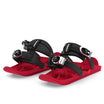
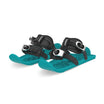












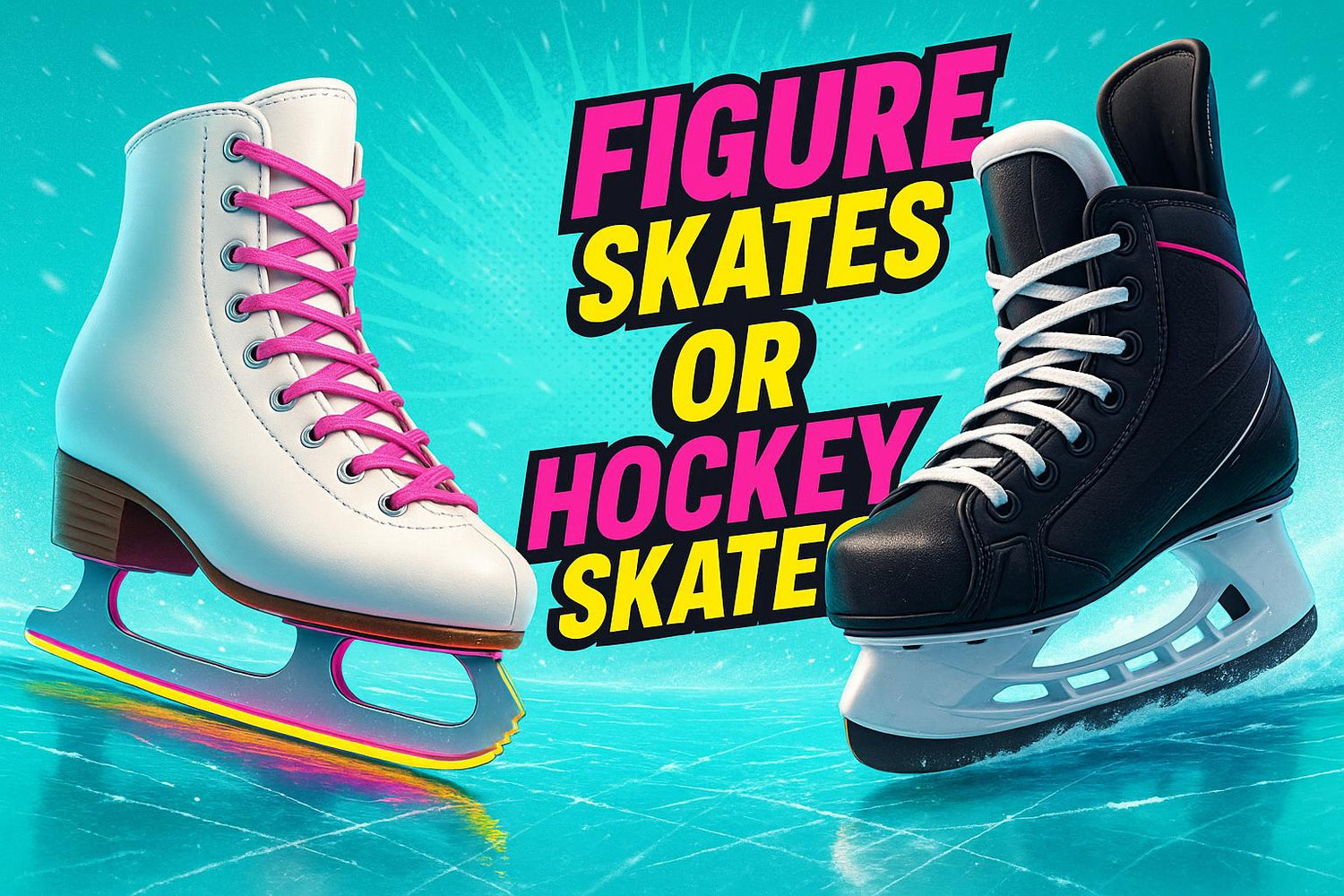
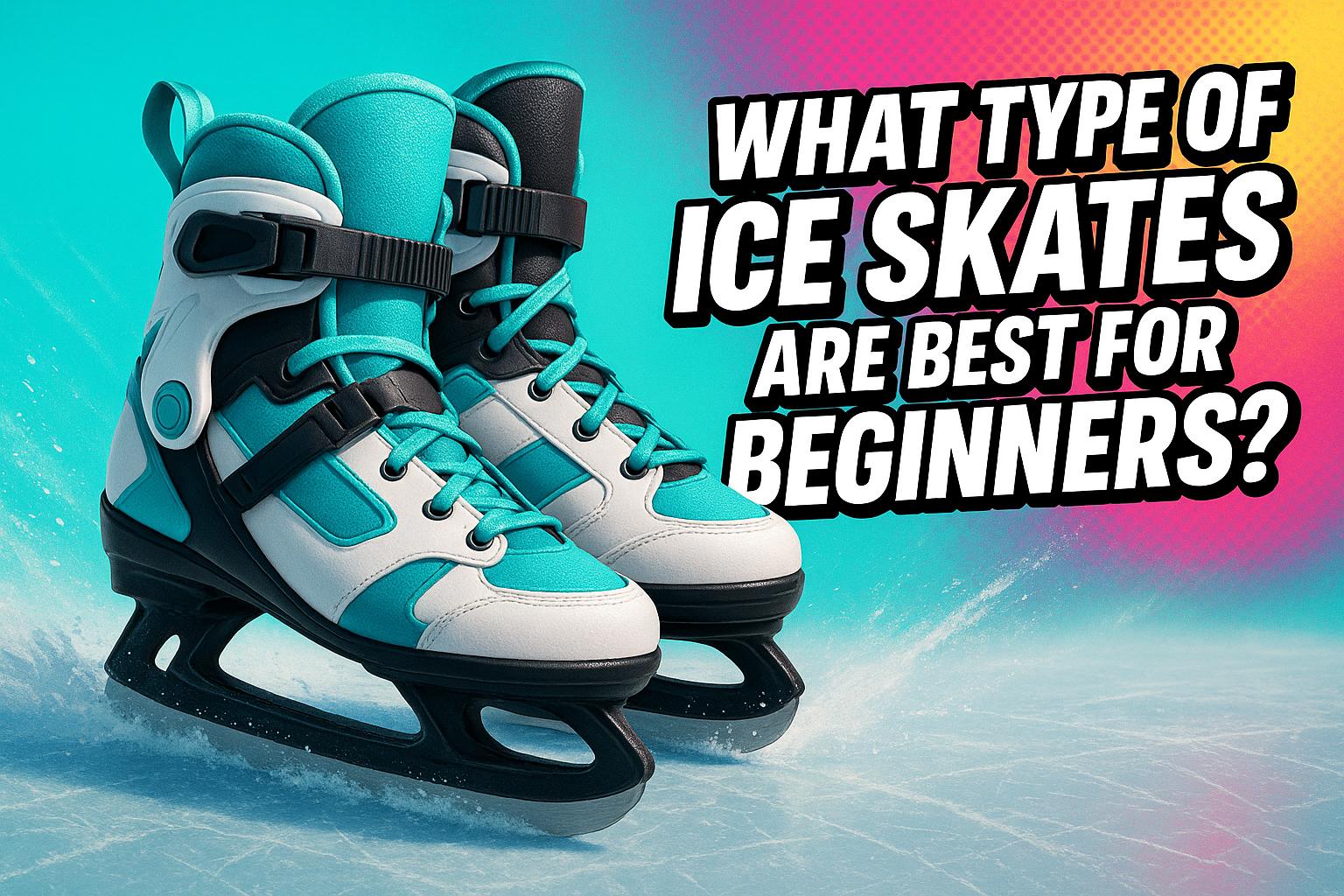
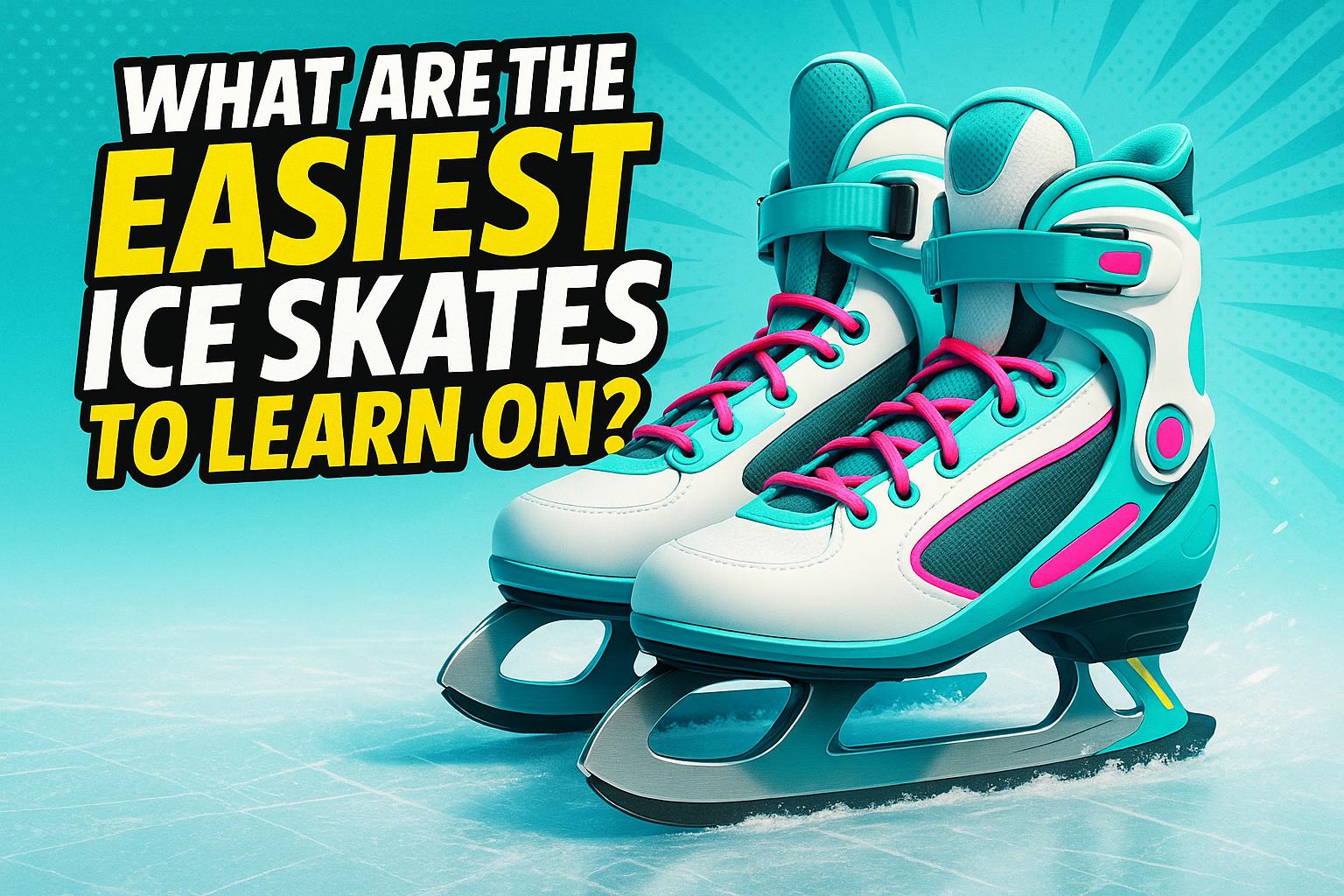




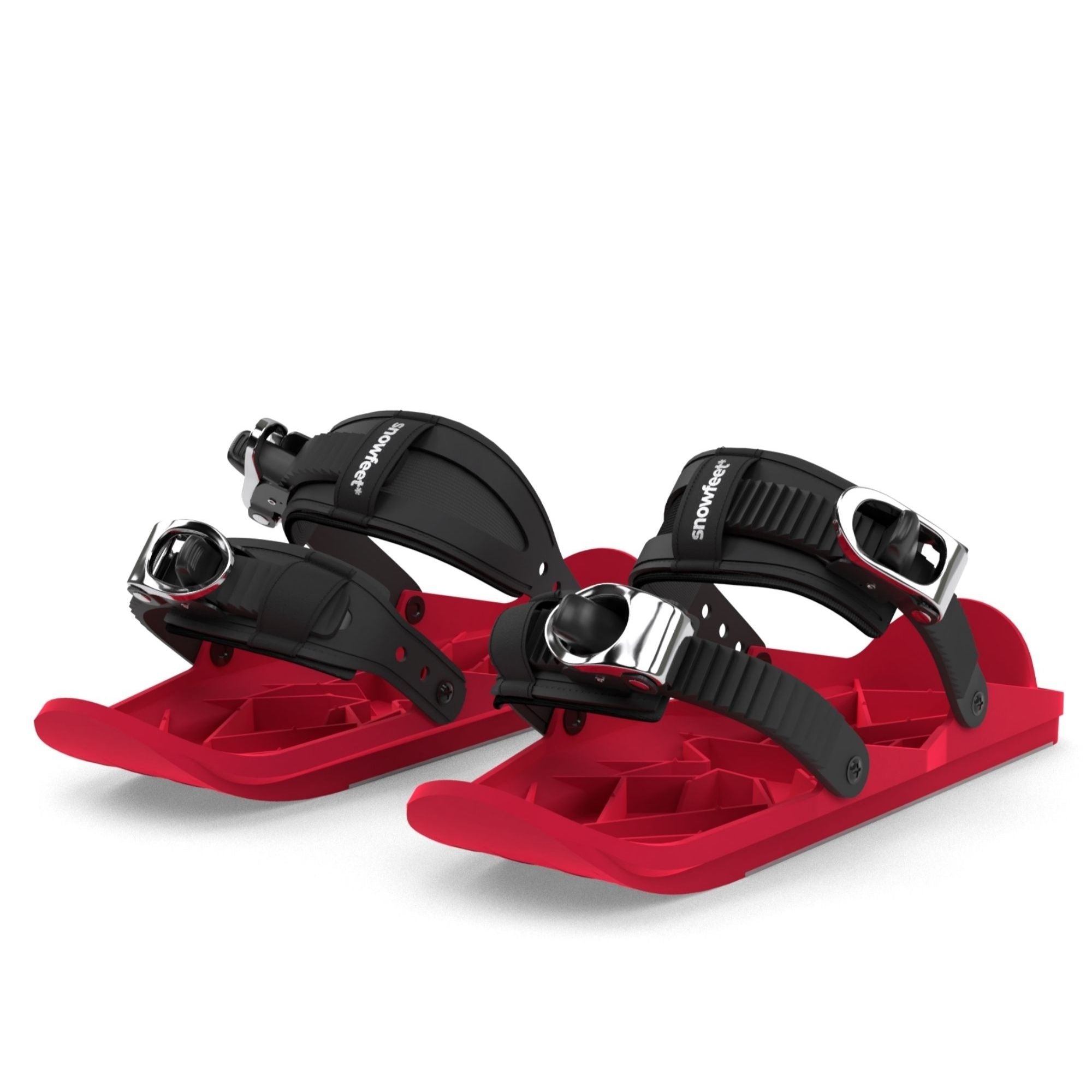
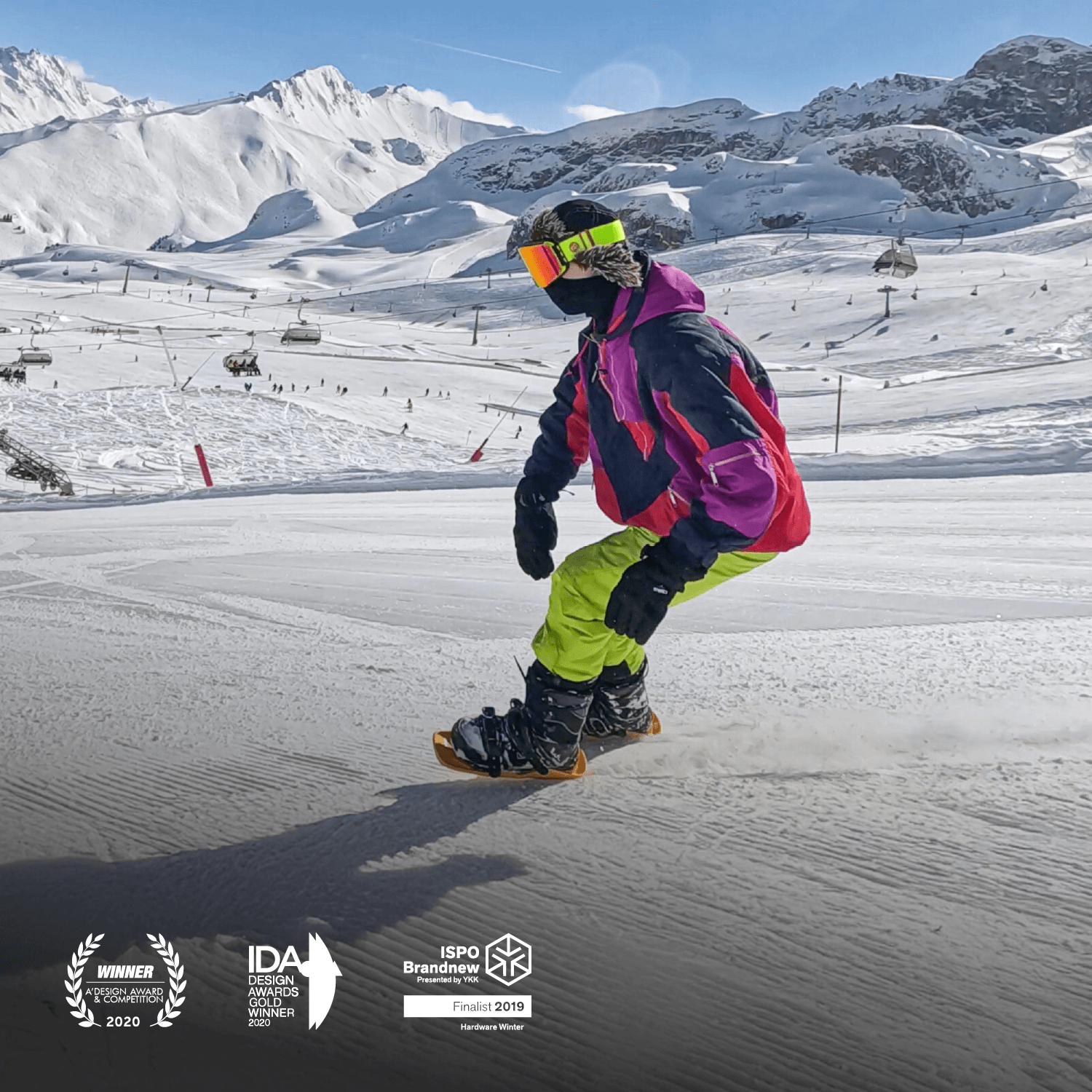




Laisser un commentaire
Ce site est protégé par hCaptcha, et la Politique de confidentialité et les Conditions de service de hCaptcha s’appliquent.